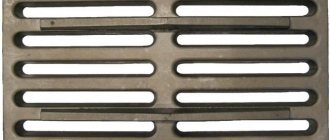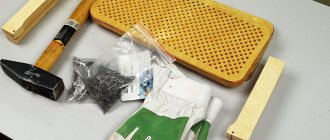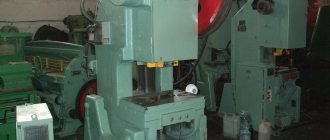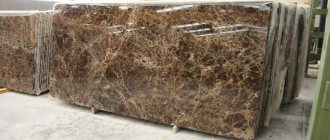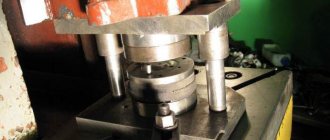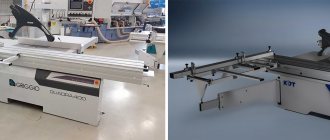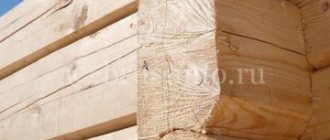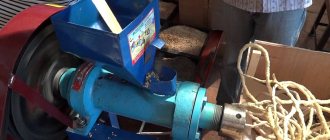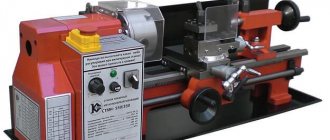Hand forging tool
Hand forging is mainly used for repair and assembly work, as well as for the production of unique, including artistic products in small quantities.
In this regard, hand forging is currently undergoing intensive development. Depending on the type of forging, blacksmith tools are divided into tools for hand and machine forging. According to their functional purpose, all forging tools are classified into basic technological ones; supporting and control. Depending on the nature of use, the tool can be universal or specialized.
The main technological tool is a tool that directly deforms the metal and gives it the shapes and dimensions specified in the forging drawing. In turn, the main technological tool for hand forging is divided according to purpose into support, impact and backing.
1.1. The main technological tool for hand forging
Manual forging operations, such as broaching, upsetting, bending, punching and piercing holes, cutting, forge welding and straightening, are performed using a support tool, which includes anvils (Fig. 1). They are made by casting from steel grade 45L weighing 70...350 kg. The top flat part of the incus is called the face. Sometimes a steel plate up to 30...40 mm thick is welded onto the top of the face, which is called the platband. After heat treatment, the hardness of the face or casing should be 40...45 HRC.
Based on the number of conical parts called horns, three types of anvils are distinguished: hornless (GOST 11396–75), one-horned (GOST 11397–75) and two-horned (GOST 11398–75). Anvil horns are used, for example, when performing bending and forging operations of hollow forgings. On the flat part of the anvils, two through holes are usually made: a round one for punching holes in workpieces and a square one for installing a backing tool.
Rice. 1. Anvils: a – hornless; b – one-horned; c – two-horned
The lower part of the anvil - the shoe - has four legs, with which the anvil is attached to the chair using crutches or clamps. The latter is a concrete pedestal or wooden block dug into the ground to a depth of 1...1.5 m. In this case, the front surface of the anvil should be at a distance of 750...800 mm above the floor level.
Shperak (GOST 11400–75) is a small anvil (Fig. 2) with two horns weighing up to 50 kg. It is made by casting or forging from steel 45. Its casing has a hardness of 40...45 HRC. The shperak is installed in the square hole of the anvil.
Rice. 2. Shperak
Impact tools for hand forging are sledgehammers and hammers. The latter are sometimes called handbrake. A blacksmith uses a hammer both to strike and to indicate to the hammerman where to strike with a sledgehammer when processing relatively large workpieces. Hammers are made with a mass of 0.5...2 kg by forging from U7 or U8 steel.
The hammer contains two strikers, one of which is round or square, sometimes octagonal, and has a smooth striking surface with rolled edges. The other firing pin, also called the butt or toe, can be spherical, pointed with a rounded edge, or blunt. The hammer heads are hardened and then tempered.
Sledgehammers are the main tool for hand forging. They are used to strike a workpiece heated to forging temperatures; they also have two strikers and are divided into blunt (GOST 11401–75) and pointed (GOST 11402–75) (Fig. 3). The mass of the sledgehammers is 2…16 kg. Pointed sledgehammers can have transverse or longitudinal toes (backs).
To secure the handle in the sledgehammer, an oval attachment hole is provided, which expands from the middle to the edges. Sledgehammers are made by forging or stamping from steels 40, 45, 50 and U7, followed by cutting of the working surfaces.
Rice. 3. Sledgehammers: a – blunt-nosed; b and c – pointed-nosed with transverse and longitudinal hindquarters, respectively
After heat treatment of the sledgehammers, the hardness of the working layer up to 30 mm deep should be 48...52 HRC.
Forging chisels (GOST 11418–75) are made from steel U7 and 6ХС and are used for hot and cold chopping of metal (Fig. 4). The former are sharpened to an angle ≥ 60°, the latter – to an angle ≤ 50°. The blade of chisels is made straight, semicircular or shaped. Its hardness at a length of ~30 mm from the working edge is 50...56 HRC, and the hardness along the impacted part at a length of ~20 mm is 30...40 HRC.
Smoothers (Fig. 5 and 6) are used to smooth out unevenness and final finishing
Rice. 5. Ironer
Rice. 4. Forging chisels for cold (a) and hot (b) cutting
Rice. 6. Smoothers (upper and lower) for forging a cross-shaped blank (late 19th century)
both flat and shaped surfaces of forgings; made by forging or stamping from steel U7, steels 40 and 45, followed by cutting. Weight 1…5 kg.
Punchers , or beards (Fig. 7), are used for punching round, square, rectangular and other holes; They are produced by forging from steel U7, steels 40 and 45. The hardness of the working part is 40...45 HRC. Weight 0.7…2.0 kg.
The undercuts (Fig. are made according to GOST 11420–75 from U7 steel. They are backing chisels and are inserted with a square shank into the same hole in the anvil. The undercuts significantly speed up and facilitate the cutting process. The undercut blade can be straight or shaped. It is hardened to a hardness of 48... 52 HRC.
Crimpers (Fig. 9) are used for rolling and finishing the side and other surfaces of forgings. They consist of two parts: the lower part (bottom), inserted with a shank into the anvil, and the upper part (top), mounted on the handle. The swaging is produced by forging from steel U7, steels 40, 45, 50, 40X, processed by cutting and subjected to hardening and tempering to a hardness of 48...52 HRC on the working part and 30...40 HRC on the impacted part. The weight of the crimps ranges from 3 to 25...35 kg.
Rice. 7. Punchers
Rice. 8. Sweeping
Rice. 9. Upper (a) and lower (b) crimps
Rice. 10. Semicircular tampers: a – bottom; b – upper
Rice. 11. Nailers: a – simple; b – special
Tampers (Fig. 10) are used for broaching, making grooves, concave surfaces, as well as for finishing some sections or the entire surface of the forging. The shape of the working areas of the tamps is determined by their purpose and can be very diverse: flat, crescent-shaped, etc. Tampers are made by forging from steel U7, steels 50G, 40X with a hardness of the working parts of 40...45 HRC.
Nailers (Fig. 11) are metal plates made by forging from steel 45 or U7. They have holes for landing the heads of bolts, rivets, nails, etc.
Rice. 12. Forge mold
Forging mold (Fig. 12) is a cast plate made of steel 35L or 40L weighing up to 50 kg with through holes and shaped cutouts on the side surfaces. Designed for finishing forgings, punching holes and profile bending work.
Manufacturing of forging holders
In a workshop, a blacksmith may have up to two dozen or more types of mites.
Because you have to work with workpieces of different cross-sections and sizes. The algorithm for producing a forging device is as follows.
- To make pliers, take a piece of 25 mm reinforcement and heat it to forging temperature.
- At a distance of approximately 350 millimeters from the edge, the circular section is pulled onto a square with sides of 20 mm.
- Having retreated part of the square by 50 mm, press it into the depth of the workpiece 8-10 millimeters.
- The next step is to cut the remaining 300 mm square into a strip, which, in turn, is formed into the handle of the future tool. Their length is about 500 mm.
- Now the finished piece for the pliers is cut off from the rest of the piece of reinforcement.
- After heating, the end of the remaining square is pressed into sponges of the desired shape.
- The second half of the forging tongs is made in the same way.
- To connect them, you need to fold them together, stitch them, or better yet, drill a hole for the fastening rivet.
Step-by-step process of producing castor beans from reinforcement
The halves are connected into a single instrument. To obtain the sponges of the desired shape, they are heated and forged into a mandrel.
How to make such a blacksmith tool will become clear after watching the video presented.
For the manufacture of smaller or, conversely, larger forging tongs, they take reinforcement or a workpiece of the appropriate diameter.
The main technological tool for machine forging
The main tools used in forging on hammers and presses include strikers, axes with different shapes of the working part, squares, clamps, rolling, crimping, piercing, extensions, mandrels for broaching and rolling.
Strikers (Fig. 13) are used mainly for broaching, as well as upsetting, piercing, bending and some other forging operations. The kit includes two strikers: a lower, fixed one, which also serves as a support; upper, movable, through which the deforming load is transmitted to the workpiece from a hammer or press. There are universal strikers that have flat working surfaces (Fig. 14, a) and cut-out (shaped) (Fig. 14, b–d), distinguished by a special profile.
Rice. 13. Strikers: a – lower and upper cutouts; b – top flat and bottom cut-out
The larger the area the cutout (caliber) of the strikers covers the surface of the workpiece being processed, the less the workpiece widens during forging and the more intense the broaching process occurs. However, the required force for broaching increases significantly.
The working surfaces of flat and contacting surfaces of cut-out and shaped strikers are made strictly horizontal and tightly adjacent to each other, without gaps. Various potholes and dents are not allowed on the working surfaces of the strikers. To avoid cutting the fibers in the forging
the edges of the working surfaces of all types of strikers at the points of their intersection with the side surfaces are rounded along the radius.
For forging in the lower cutout and upper flat strikers, the lower striker is often made as a composite with inserts. Inserts allow you to quickly change the size and shape of the cutout to the required size. In addition, as the liners wear out, they become easier to replace.
Solid strikers and replaceable inserts are made by forging, depending on operating conditions, from steels 50, 50G, 40ХН, 5ХНВ, 5ХГМ. After mechanical treatment, they are subjected to heat treatment to a hardness of 40...45 HRC.
Axes (Fig. 15) are used to carry out operations of cutting off parts of the original or forged workpiece or cutting them into dimensional pieces. In Fig. Figure 16 shows a diagram of the operation of cutting off a part of a workpiece with a blacksmith's axe. Depending on the purpose, the designs of axes used in blacksmithing are varied.
Axes are made by forging from steel 18ХНВА or steel 50, steels 35ХМ, 5ХНВ, 7X3, 8X3, 5ХНМ, subjected to heat treatment to a hardness of 40...45 HRC.
Rice. 14. Working surfaces of the strikers: a – flat at the upper and lower strikers; b – flat at the top and cut-out at the bottom strikers; c – cutout at the upper and lower strikers; d – shaped at the upper and lower strikers
Rice. 15. Blacksmith axes: a – trapezoidal ax for chopping in a cut-out head; b – an ax with a solid forged handle; c – semicircular
Ax handles are made of steel 20 or St 3. Large, heavy axes are made with quick-change handles or handles suspended from the crossbar of the press. To make working with such axes easier, manipulators are often used.
Clamps are used to create single or multi-sided recesses for the subsequent formation of ledges or pinch on the workpiece.
Recesses on the workpiece (notches) serve to fix (or mark) the volume of metal that should be subjected, for example, to broaching in order to obtain the required geometry of the workpiece after forging. Notches are usually made by pressing a round or rectangular rod into the workpiece. To increase the depth of the notch, for example, until a ledge is formed on the workpiece, clamps of various geometries are used.
Rice. 16. Cutting off part of a workpiece with a blacksmith’s axe: 1 – workpiece; 2 – ax; 3, 4 – strikers
In Fig. 17 shows a diagram of the clamping operation, and Fig. 18 – technological sequence of manufacturing step forging by broaching using clamping. Clamps are made from steels 40, 45, 40X.
Rice. 17. Clinching pattern: a – round rolling; b – triangular clamping; 1, 2 – upper and lower strikers, respectively; 3 – tool; 4 – workpiece being processed
Rice. 18. Technological sequence of manufacturing a three-dimensional T-shaped workpiece: a – initial workpiece; b – workpiece after pressing from four sides; c – workpiece after broaching
Rice. 19. Acceleration: 1, 2 – strikers; 3 – workpiece; 4 rolling out (pressing)
Rolling (pressing) is a tool used to make local indentations and straighten metal. By expansion (Fig. 19) we mean an increase in the width of the workpiece or its diameter by local compression of adjacent sections of the workpiece with a decrease in its thickness. The predominant flow of metal during acceleration is always perpendicular to the direction of movement of the striker. After acceleration, the resulting wavy surface is smoothed with a flat (pressing) striker. The tool used - rolling - is made of various shapes (Fig. 20) from steels 50, 40, 45, 40Х, etc.
Rolling handles are made of low-carbon steel, for example St 3 or steel 10.
Crimpers are used to redistribute metal along the axis of the workpiece (rolling) or finishing forgings, as well as in the manufacture of forgings on hammers and presses. According to their design, crimps are divided into detachable (Fig. 21, a) and one-piece (Fig. 21, b), mounted on one common handle. They are made from steels 40, 45, 50, U7, 40X.
Rice. 20. Some types of rolling
Rice. 21. Crimping: a – rolling detachable; b – rolling spring
Rice. 22. Stitches: a – cylindrical; b – conical; c – hollow; g – wedge-shaped
Piercing tools (Fig. 22) are the main tool for piercing - a forging operation of making holes in forgings by displacing material. For ease of working with piercings, cylindrical through or blind holes are made on their surface, into which transport or installation pins are inserted. The piercings are made from steels 40Х, 50Х, 5ХНВ with a hardness of 40…45 HRC.
Cold forging equipment
Cold forging is a more modern type of metal processing. In this case, the finished product is made up of blanks that are cut and bent using special equipment. It is divided into machines and devices for bending metal rods:
- A bender is the main cold forging tool, which allows you to bend iron bars at a certain angle, or create arcs of various radii. It can be used to produce various elements or the entire product.
- A simplified bend is used to give the workpiece a square shape.
- The wave is a piece of equipment with a self-explanatory name. It gives the product a perfect wave-like shape.
- A snail is a tool that twists spirals from a metal rod.
- Twister is a tool for twisting a metal rod around an axis.
- A flashlight is a type of equipment that makes it possible to obtain elements with iron rods intertwined in a special combination.
- A volumetric machine is equipment that allows you to make three-dimensional patterns, bend them at a certain angle and form a square.
- A template is a piece of equipment used to bend a square or circle.
This is the basic set of tools needed for blacksmithing. Many craftsmen make some of their own devices. A hand press is used as additional equipment . It is used to make triangular-shaped elements, or a houndstooth pattern. Currently, the latest metal processing machines are widely used for the production of forged products: a forging machine for the production of various forged elements, plasma and laser cutting of metal, as well as a bending machine.
Hand holding tool for hand and hammer forging
The main supporting tool for hand forging and forging with hammers are pliers with various jaw geometries (Fig. 23). They are used to grip, hold, rotate and move workpieces and forgings during the forging process. Practice has developed rational types of pliers in relation to the overall dimensions and profiles of the workpieces being processed and the nature of the operations performed.
Rice. 23. Forging pliers: with longitudinal jaws (a – rectangular; b – square; c – cylindrical; d – conical); with transverse jaws (e – square bent; f – flat-round; g – bent; h – flat; i – rectangular; j – sharp)
Traditionally, pliers consist of two halves, each of which has a handle on one side and a sponge on the other. Each half of the pliers is fixed on a common axis. For better fixation of workpieces, the profile of both jaws of the pliers must correspond to the shape of the grasped end of the workpiece and be in contact with it along the maximum length of the jaws. (If necessary, to ensure better contact of the pliers’ jaws with the workpiece, they are heated to increase plasticity, they cover the cold workpiece with them and the jaws are pressed against the workpiece with hammer blows.)
The pliers must have free rotation of the handles on a common axis without jamming, exact alignment of the jaws when the pliers are compressed, and the handles of the pliers must be located in the same plane. Cracks, folds and nicks are not allowed. To increase the reliability of fixing the workpiece in the pliers, their handles are covered with various rings or C- and S-shaped hooks during operation.
During operation, the pliers are periodically cooled in water. Various types of pliers are made in accordance with GOST 11385–75 or according to GOST 11395–75 by forging from St 3 and steels 15, 20, 25, i.e. steels that do not harden when heated during operation (with carbon content 0.25%).
For transportation and manipulation both during heating and during forging of large, heavy workpieces and forgings, various devices are used: manipulators, devices or lifting and transport equipment of the forge shop.
Requirements for blacksmith workshops
A mandatory requirement for hand-made artistic forging workshops is the presence of a good exhaust hood. For this purpose, an additional chimney can be used, which will facilitate the removal of combustion products. To maintain draft and prevent the possibility of smoke, many craftsmen install a fan in the room.
The anvil is securely fastened to a wooden pad or hard block. In the first case, it is placed in an iron barrel, which can be filled with clay or sand. To eliminate the risk of loosening, the base should be buried in the floor. To strengthen the anvil, one central spike located below is sufficient. To muffle the excessive noise that occurs during operation, you can install an additional gasket made of hard rubber. If there are uneven surfaces on the pillow, it must be leveled.
